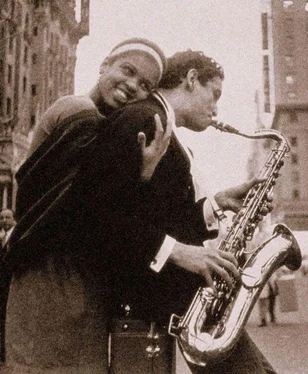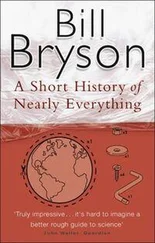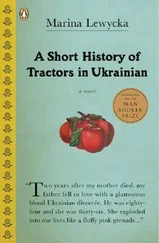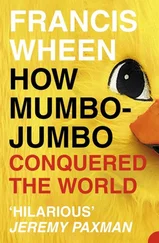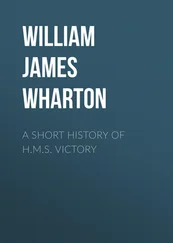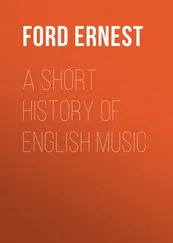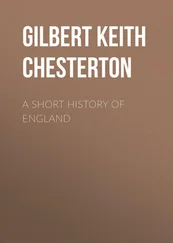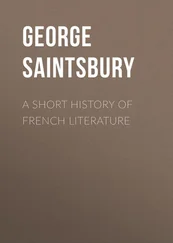Michael Morangelli - Jazz - A Short History
Здесь есть возможность читать онлайн «Michael Morangelli - Jazz - A Short History» весь текст электронной книги совершенно бесплатно (целиком полную версию без сокращений). В некоторых случаях можно слушать аудио, скачать через торрент в формате fb2 и присутствует краткое содержание. Жанр: Классическая проза, на английском языке. Описание произведения, (предисловие) а так же отзывы посетителей доступны на портале библиотеки ЛибКат.
- Название:Jazz: A Short History
- Автор:
- Жанр:
- Год:неизвестен
- ISBN:нет данных
- Рейтинг книги:3 / 5. Голосов: 1
-
Избранное:Добавить в избранное
- Отзывы:
-
Ваша оценка:
- 60
- 1
- 2
- 3
- 4
- 5
Jazz: A Short History: краткое содержание, описание и аннотация
Предлагаем к чтению аннотацию, описание, краткое содержание или предисловие (зависит от того, что написал сам автор книги «Jazz: A Short History»). Если вы не нашли необходимую информацию о книге — напишите в комментариях, мы постараемся отыскать её.
Jazz: A Short History — читать онлайн бесплатно полную книгу (весь текст) целиком
Ниже представлен текст книги, разбитый по страницам. Система сохранения места последней прочитанной страницы, позволяет с удобством читать онлайн бесплатно книгу «Jazz: A Short History», без необходимости каждый раз заново искать на чём Вы остановились. Поставьте закладку, и сможете в любой момент перейти на страницу, на которой закончили чтение.
Интервал:
Закладка:
Please don’t assume that Bop was the death of jazz - in many ways, Bebop was a logical conclusion to the Swing Era and many of its elements had direct roots in the Swing Bands of the Era. The Basie Band which lent so much momentum and depth to the Swing Era planted many of the seeds which sprouted into Bop. Basie’s piano style led directly to a de-emphsis of the left hand in modern Piano, the drumming of Jo Jones left a mark on all Bop drummers, and Lester Young’s relaxed style of playing directly influenced the Cool School. In addition, the rationing of World War II changed the whole economic basis for the large bands - touring was virtually impossible during the war years and many players were called or volunteered to serve - Glen Miller being the most visible casualty. The economic basis for the music business would no longer support large units and the small group came to the fore.
Also, the musicians themselves were striving to break loose from the musical cliches of the Era. Bop reflected a revolt against the confines of the Big Bands - the sparse solo spots in the swing arrangements minimized the opportunities for exploratory improvisational expression. This also reflected a change in emphasis from the melodic to the improvisational. The younger players chaffed at the restrictions the Swing style and the Big Band imposed. Part of this was due to the 78 rpm record which was limited to 3 min per side. This limitation was not removed until the advent of the 33 rpm record in 1948 (seems another Jazz style is tied to a technological innovation). And finally, in some ways, the younger players felt section work did not favor or reward creativity but rather craftsmanship - and the craftsmen were earning more than their fair share of fame.
The influences of these two eras are with us today - 50yrs from the end of Swing and the advent of Bop.
But, to my mind, the real impact is not the musical elements but rather the orientation with which we view the music. We seem to be caught between two opposing camps. One is the popularity and economic rewards associated with the Swing Era - a time when the music was economically healthy, the performing venues plentiful, and musical craftsmanship its own reward. The second, is the artistic values of Bop - when creativity, improvisatory exploration, and instrumental prowess turned inward to the music itself. This legacy is still being resolved.
10 Bop Till You Drop
The advent of Bob was sudden and for the working musician it was almost ‘overnite’ - but in reality, the origins span a greater length of time and several factors contributed to its development. First, WWII had great impact on the Black Community in this country. The color line between Black and White started to break down and the economic potential of the Black audience started to be noticed. The Broadway and 52nd Street Clubs started to advertise for the Afro-american market and this in turn created a highly receptive audience which in turn influenced the music. Secondly, within the music itself, the color line which had begun to break down in the ‘30’s - and hastened by WWII - enabled a closer association between musicians and eased the transition of influences and innovations which no longer had to cross a color barrier. What gave the appearance of ‘overnite’ was the recording ban of 1942-44 - those who depended on recordings for jazz music did not encounter it till 1945. And this music which emerged was a radical departure from the Swing Era as the very function of the music had changed from Dance to Art.
The Bop Era was both an internal revolution and a evolution with regard to the Swing Era. Most of what I have encountered focuses on the revolution - but I would state that there were equal parts of both. Last month, I mentioned the revolutionary aspects and these are the accepted elements which sparked the music - I agree totally with these factors but the evolutionary is also significant. I offer the musical lives of “Two Giants” - one the revolutionary and one the evolutionary. They were opposites in almost every aspect of there lives - both musical and personal - and yet were inseparable musical partners in this new music.
Dizzy Gillespie [born on October 21, 1917] came from a well structured and musical family. His father, who was a amateur musician, taught his kids several musical instruments. Dizzy, as such, studied harmony and theory while still young and had music studies paid for by his father till age 15. He took over Roy Eldridge’s chair in the Teddy Hill Band in 1937. Eldridge was Dizzy’s musical idol and played a good imitation of him but gradually developed his own style. An interesting note from the Berendt book states that the time distance between Dizzy and Armstrong is surprisingly short - the Hill band grew out of the Lewis Russell Orchestra and Russell had taken over the King Oliver Band in 1929. A case might be stated that Dizzy’s immediate roots in jazz are the traditions of New Orleans and Chicago Dixieland. It should be noted that his first recording - in 1937 - was Jelly Roll Morton’s King Porter Stomp with the Teddy Hill Band. Returning to the States after a tour of Europe in 1937 with the Hill Band - where his playing abilities were already recognized - he became a member of the Cab Calloway Orchestra [with the famous/infamous Diz cutting Cab story].
Dizzy, in spite of his admission of ‘difficulty’ copying Eldridge’s style and that he ‘quite didn’t get it’, worked in the bands of Benny Carter, Charlie Barnet, Lucky Millander, Earl Hines, Duke Ellington, and Billy Eckstine. He also started to arrange and Woody Herman, Jimmy Dorsey, and Ina Ray Hutton bought his material. I think it is safe to say that Gillespie was well versed in the Swing Era Idiom. This association with large groups was his first love. Deep down inside, he was a big band player - he founded his first band in 1945 and from ‘46-50 led large bands almost exclusively. The Afro-cuban experiments were also presented in a large group format. It is with this history that Dizzy evolved out of the Swing Era into Bop - for while embracing and creating the new idiom he made logical advances based on his previous experience. If Parker was the ‘tortured creativity’ of the Bop Revolution, Dizzy was the one who ‘gave it the power and glamor’ to conquer the jazz world - for part of him still held with the idea that music was functional entertainment not exclusively Art.
Charlie Parker [Born August 29, 1920] did not have the same early musical experiences that Dizzy did - his family life was just not as stable, supportive, or musical. His first attempts at sessions were a disaster, but the experiences [as a 10 year old] pushed him to try harder and by 1936 no one in his peer group came close to equaling him on Alto - by age 15 he was already supporting himself as a musician and
[some evidence of] his narcotics habit. He joined the Jay McShann Band in 1937 and, consistent with his early musical experiences, played and heard the Blues nightly with that band - a riff based Kansas City organization. He held menial jobs to make ends meet but always seemed to ‘scuffling’ for money. He quickly was bored with the stereo typed changes of Swing and early on searched for something else. At this stage, his playing was not well received [the Jo Jones and the Cymbal incident], but the revolutionary in him could not be suppressed.
He came to NYC in 1941 with the McShann band and there, played with Dizzy for the first time [they met originally while Dizzy was in KC in 1939]. When the McShann unit left for Detroit, Parker accompanied them but left soon afterward - he never cared much for Big Bands. After this, he went almost nightly to Minton’s to sit in with the regular band of Thelonious Monk-Piano, Charlie Christian-Guitar, Joe Guy-Trumpet, Nick Fenton-Bass, Kenny Clark-Drums. He met Gillespie again and the two became inseparable - by 1942 they were playing regularly together and had begun to record in spite of the recording ban which held up releases. Much has been said of these Minton’s sessions but Monk put it all in perspective: Dizzy Gillespie Charlie Parker “Nobody, was sitting there trying to make up something new on purpose. The job at Minton’s was a job we were playing, that’s all”.
Читать дальшеИнтервал:
Закладка:
Похожие книги на «Jazz: A Short History»
Представляем Вашему вниманию похожие книги на «Jazz: A Short History» списком для выбора. Мы отобрали схожую по названию и смыслу литературу в надежде предоставить читателям больше вариантов отыскать новые, интересные, ещё непрочитанные произведения.
Обсуждение, отзывы о книге «Jazz: A Short History» и просто собственные мнения читателей. Оставьте ваши комментарии, напишите, что Вы думаете о произведении, его смысле или главных героях. Укажите что конкретно понравилось, а что нет, и почему Вы так считаете.
